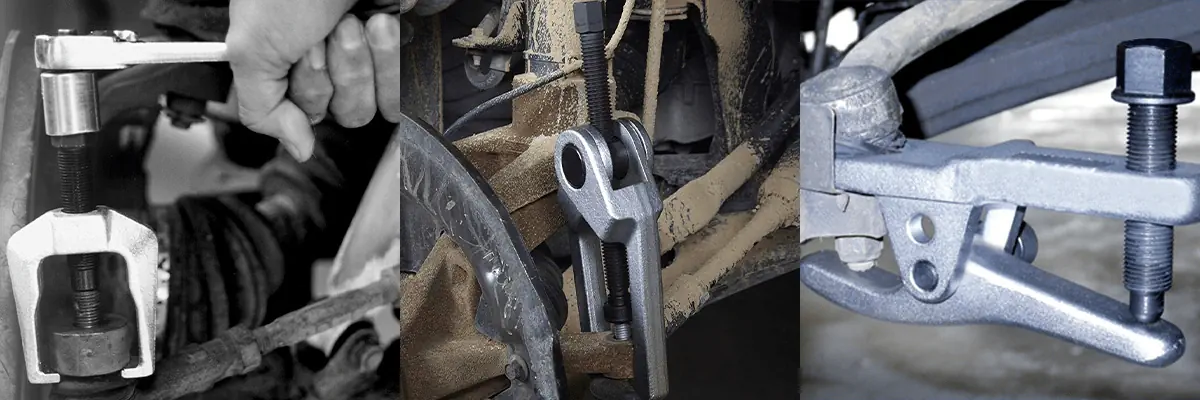What are Ball joints
The ball joint is a spherical bearing that connects the vehicle control arm and the steering joint. Its function is very similar to the hip joint of the human body and can perform multi-directional movements. They serve as the pivot points of the steering system, transmitting the steering input from the rack or center link to the wheels through the steering knuckle, enabling the wheels to turn left and right smoothly. Depending on the type of suspension, most cars have both upper and lower ball joints.
When the ball joint is damaged, the most direct impact is the loss of precise connection between the steering and suspension, resulting in decreased vehicle handling, increased abnormal noise, uneven tire wear, and in severe cases, the risk of vehicle loss of control or even wheel detachment.
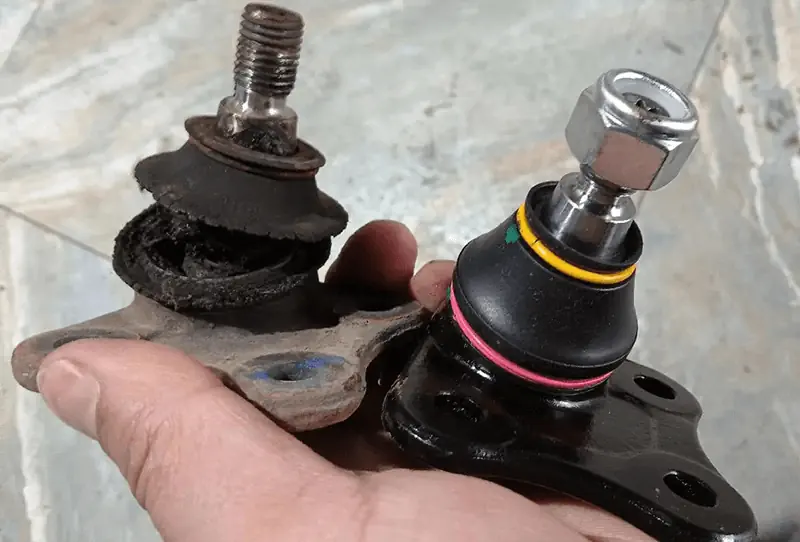
Ball joint —— Tie rod —— Sway bar
When you inspect the parts of the car chassis, you will find that both the sway bar (stabilizer links) and the tie rod end (inner tie rod) have a ball joint, don’t they? Well, that’s right. But both the tie rod end and the ball joint of the sway bar are designed as an integrated unit. If they break down, the entire part needs to be replaced.
Ball joint is a spherical bearing built into a vehicle’s control arm assembly—each front suspension arm (upper and lower) contains its own ball joint.
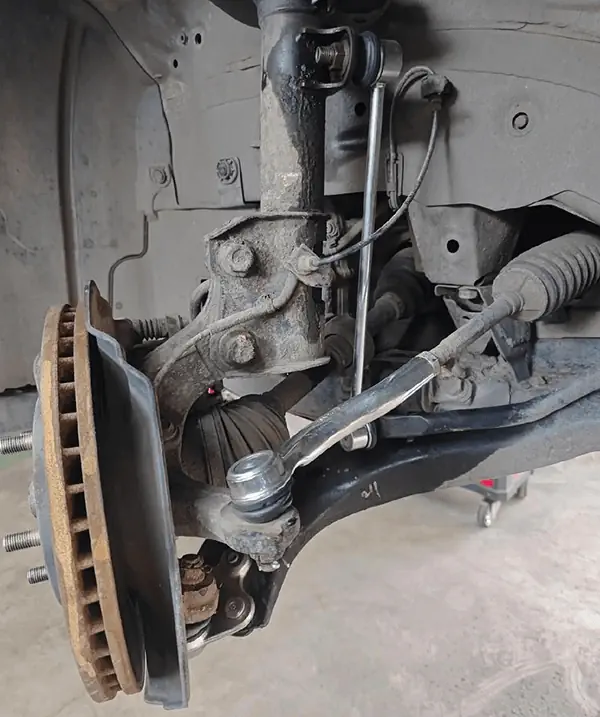
Common symptoms of a bad Ball joint
Normal wear and mileage: As the ball joints bear the weight of the vehicle and are constantly in motion, they will wear over time. Under normal usage conditions, their range is usually between 70,000 and 150,000 miles, but this also depends on driving habits and road conditions.Situations that aggravate the wear of the ball joint: such as bumpy and potholes on roads, frequent sharp turns, heavy loads (such as towing or off-roading), and frequent exposure to water or road salt can all accelerate wear.Boot Damage & Lubrication Loss: Each ball joint is packed with grease and sealed by a rubber “dust boot.” If the boot cracks or tears (from debris, age, or even pressure-washing) grease can leak out and dirt can enter. Loss of lubrication and contamination greatly speed up wear. These are common symptoms:
-
1. Abnormal noise
Clunking or Rattling Noises: A classic sign is a faint clunk, “dada” or rattling noise from the front suspension, especially when going over bumps or making turns. which may be more noticeable when driving slowly, turning corners, or driving over speed bumps. This noise often starts quietly and grows louder as the joint wears. The friction caused by the worn ball joint leads to the occurrence of noise. In fact, there are many causes of noise. Please check the condition of your vehicle in time.
-
2. Abnormal vibration
A normal car is very “gentle” when in motion. A damaged ball joint may loosen, causing the suspension to shake slightly and be accompanied by noise during driving. If the vehicle speed is fast enough, this will cause the steering wheel to vibrate and generate vibrations or rumbling sounds inside the cabin.
-
3. Steering Offset
Since the ball joints connect the suspension to the wheels, worn ball joints can form a loose point in the vehicle’s suspension system, which may affect the vehicle’s steering, such as poor steering sensitivity, inability to maintain straight driving when the steering wheel is released, and deviation to one side.
-
4. The wear of the tires is uneven
There is a problem with the vehicle’s suspension system. The most common issue is uneven wear of the tires, which indicates that the tires are not on the same horizontal line and have tilted. One side of the tire will wear more severely, as shown in the following figure.
-
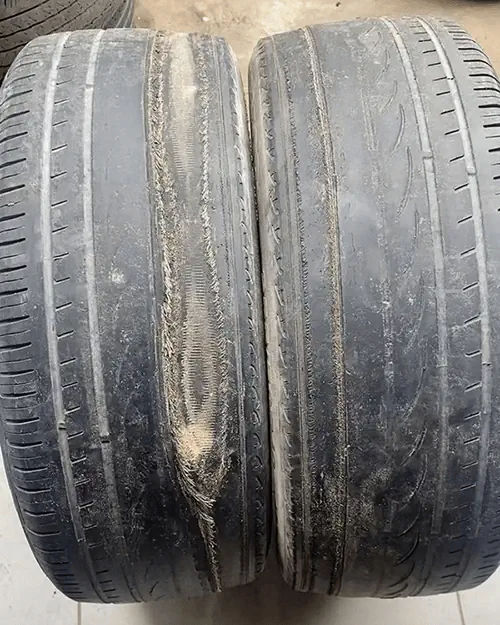
How to detect whether the Ball joint is damaged?
-
1. Visual inspection
Lift the vehicle and visually inspect the ball joint for any wear or cracks, whether it is in good condition, and whether there is any abnormal situation such as oil leakage.
-
2. Shake Test
Hold and shake the control arm with both hands or a tool to check for any abnormal sounds or looseness. If you are not sure, please compare the left and right wheels.
You can also directly move the ball head forward, backward, left and right for testing to check if there is any specific Angle that feels too tight, abnormally loose or shows any signs of uneven movement.
-
3. Road Test
When driving a vehicle on the road, listen carefully and feel whether there are any of the above symptoms on the chassis. Such as abnormal noise or vibration.
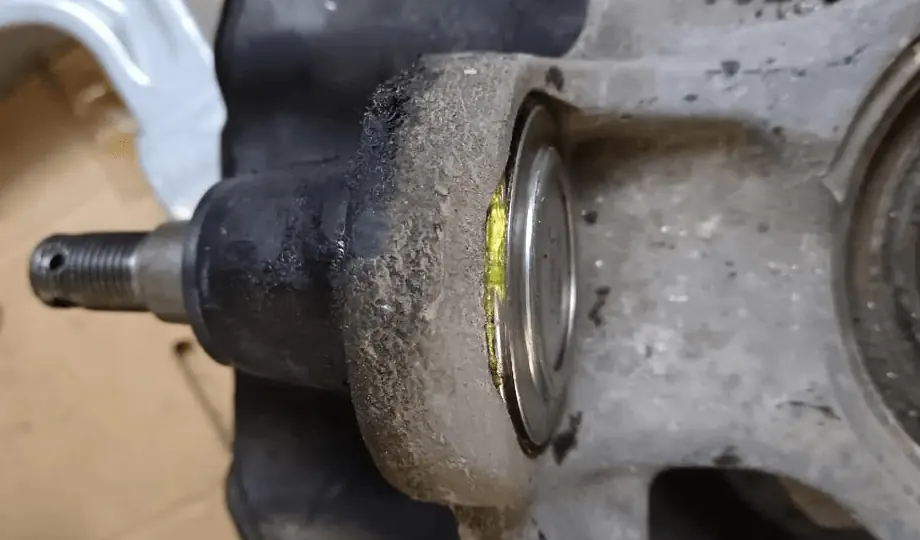
Conclusion:
A damaged ball joint can cause instability of the vehicle. Please do not ignore even minor abnormal conditions, as they may lead to more wear of parts and eventually result in expensive repair costs. Remember to check the condition of the ball joint during wheel maintenance. If you often drive on rough roads or in bad weather, it is even more important to check in advance to identify problems. Please find professionals for inspection in time. Replacing the ball joint requires professional tools. If you don’t have relevant experience, please don’t replace it by yourself. After replacing the new ball joint, perform four-wheel positioning based on the previous condition of the vehicle to ensure the safety of the vehicle.
